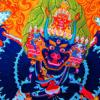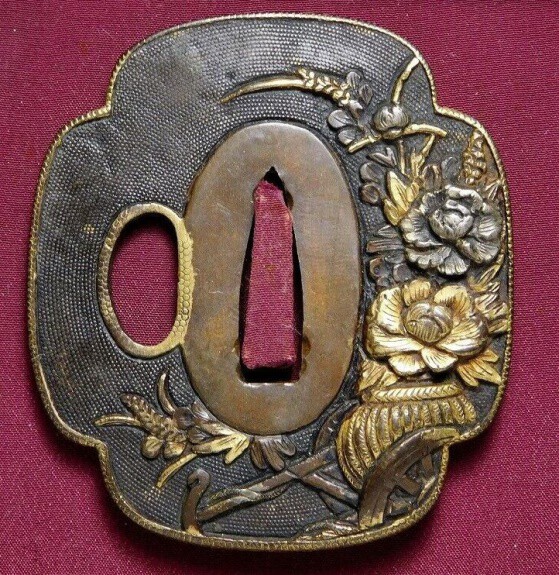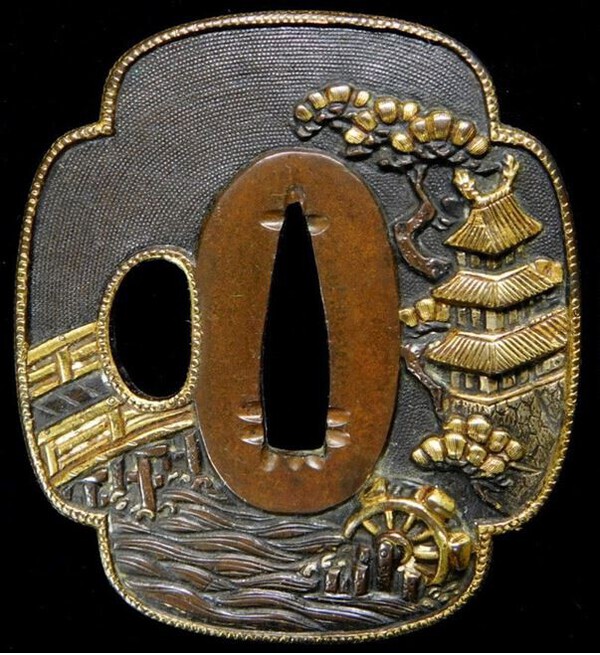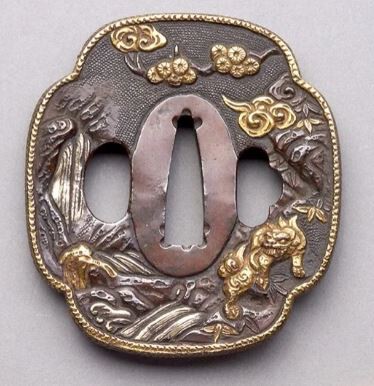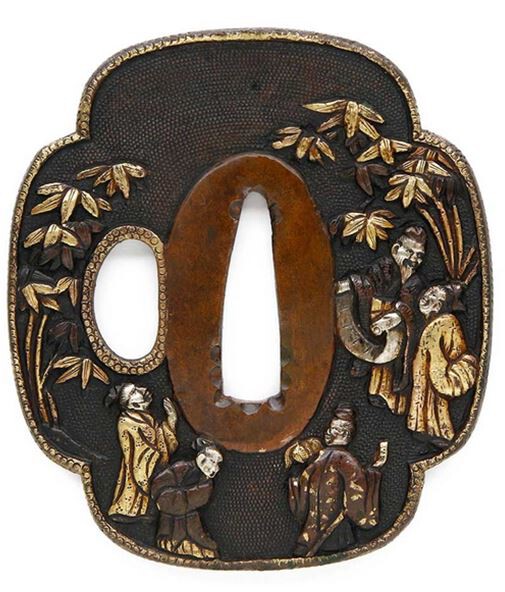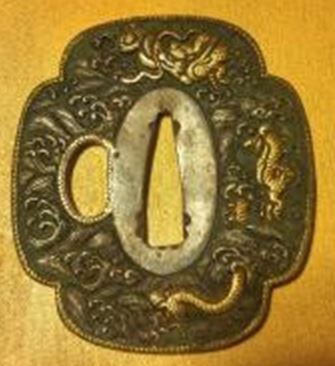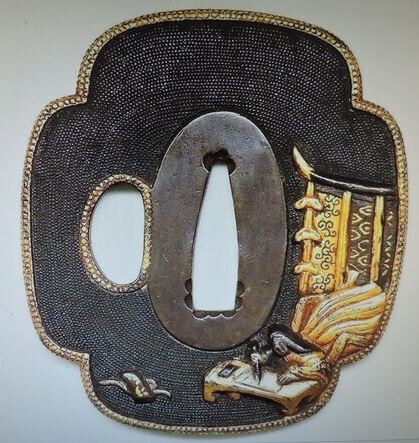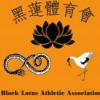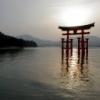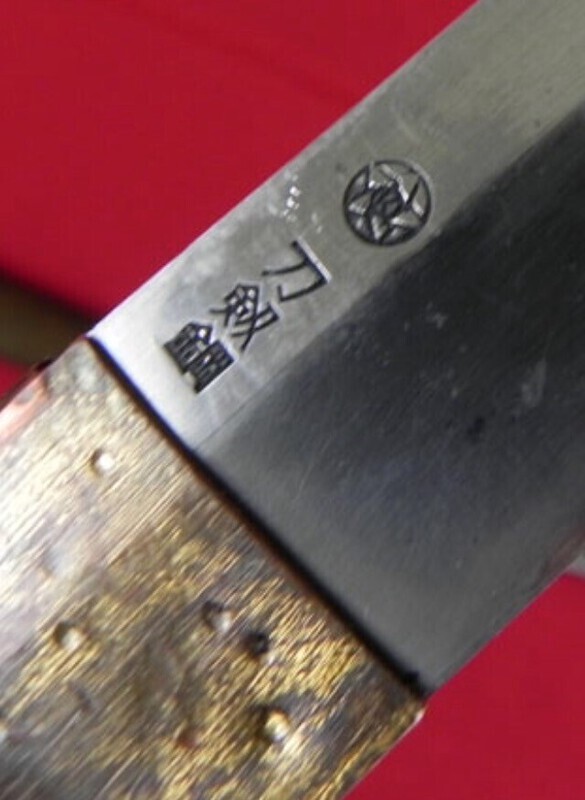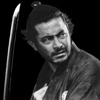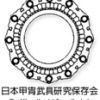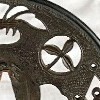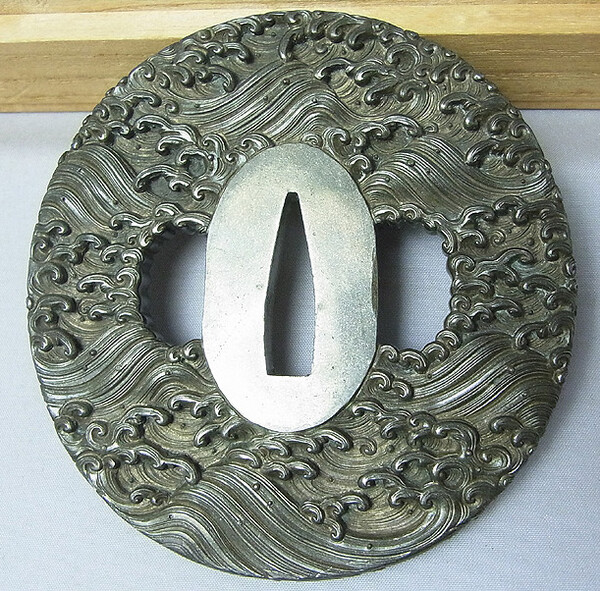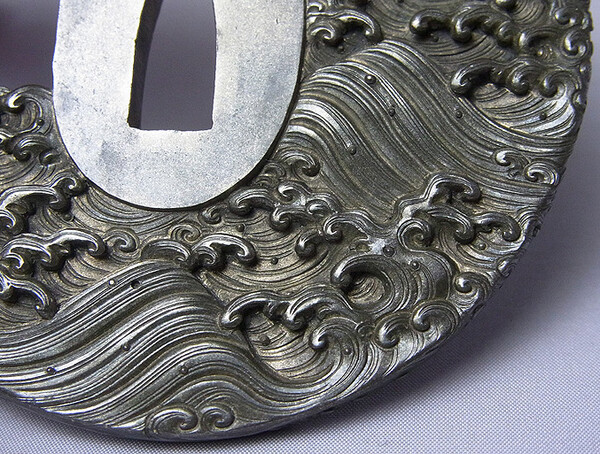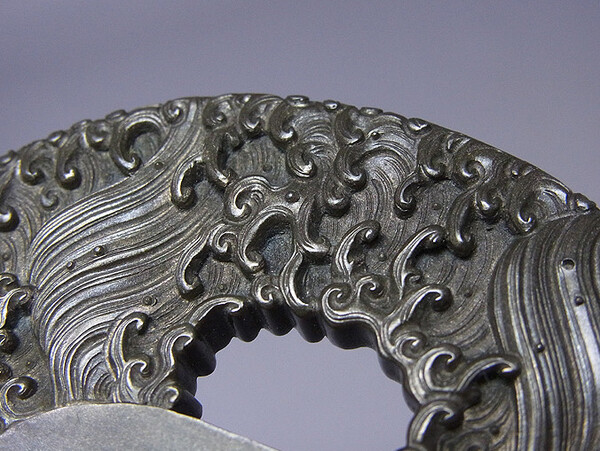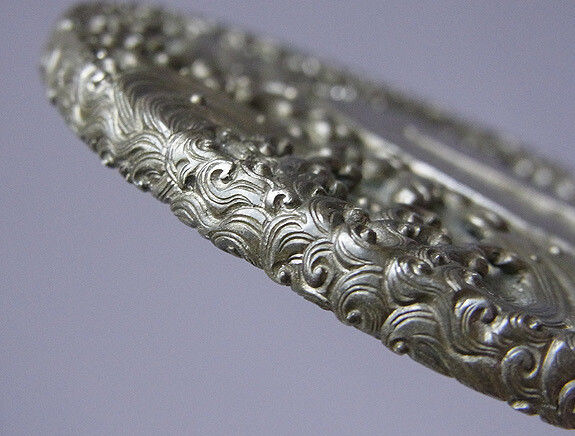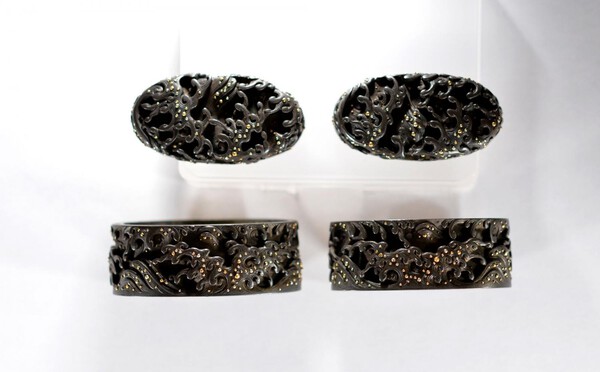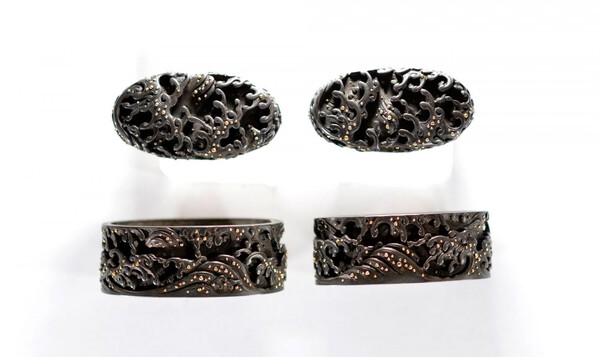Leaderboard
Popular Content
Showing content with the highest reputation on 01/17/2021 in all areas
-
I'm back! The Tadayoshi did indeed make many styles of Hamon ---and the world recognised signature pieces were suguha. But not just any suguha….THE suguha. The forgers jumped on this bandwagon, and anything with suguha was faked into gimei Tadayoshi with varying degrees of signature quality from that akin to a 2 year old drawing in sand with a chopstick, to the Hizen Kaji itself adding the signatures. Some rare genuine pieces are in the more flamboyant choji midare, gunome etc and I suspect were special orders. The Oshigata books are full of them, but they rarely surface in the flesh, and when they do, they command very high prices and great care is necessary. The bulk of the works we see are therefore suguha- and in really nice suguha with some fine, often missed, ashi sometimes (4th and 5th if I recall correctly), and nijuba (2nd Gen), bright nioiguchi (2nd gen), nie deki in dark nie (1st gen) , flawless (3rd Gen)and so forth. Since the wilder hamon are buried deep in collections and rarely seen, the tendency is to assume they are gimei when they do show up. If you see a suguha sword, most jump straight to the Tadayoshi and if the hamon is lifeless, then clearly NOT the work of this school. The reality is that far more suguha gimei are out there, and unfortunately, some 85% of the overall Tadayoshi swords/oshigata/images I come across are in my opinion outright gimei, maybe 10% are in the 'not sure' bracket, and 5% have me drooling. The 10 % is the grey ‘floating world’ of gimei and all sorts of theories expound, but they can be really, really good. In short, its not JUST the signature, but the message the whole sword puts out. No I am not high! What I do when I see the wild hamon type swords is to put a great big question mark in the equation. In fact, the best approach is to not have any sword fever at all, and start with a gimei approach, the aim being to find signs that prove it is genuine and try to take the hoarder/gold fever attitude out of the equation as the heart beats faster. So the question is.... is this sword genuine. Since I presume no-one bought it who commented, it is now an easy option to say probably gimei, feel good about it and move on, but I don’t think that does this sword justice. I once saw an old collector at the SFO show years ago sit for two days behind the dealers table with a single sword he was contemplating buying – just getting to know it and listen to it he said! The sword, from what I can see (which isn't much) , doesn't have any obvious flaws and looks nice quality with a good colour to the steel. It gives an impression of quality, not junk. In no particular order...... The almost O-Kissaki and boshi is great with a Hizen type kaeri (I think that is what is there- an even tightish turnback without the wavy midare carried into the actual turn itself?). It’s a stoutly (very stout) proportioned sword, with an unusually short nakago and a signature that fills the nakago…… almost tsunobi tanto style --- so if it is only JUST a wakizashi in cutting length, then that's good news because there seemed to be a penchant for tsunobi (oversize 1 shaku 1 sun) tanto within this school (ie you don't often see small tanto, but you do see technically short wakizashi over 1 shaku, with tanto type proportions – tsunobi tanto), hence the rather short nakago ** (more later). Koshirae is possibly changed but ---glimpse of a Hizen Namban type of tsuba, a glimpse of lovely menuki in quality shakudo and gold, a glimpse of a silver dragon kanamono on the dried up saya ripe for restoration. Kind of points to a higher value owner than a hunter killer impoverished Samurai. Onto the nakago ----- well the nakago shape is good for the early generations, rounded V shaped nakagojiri, yasurimei are good quality, patina suggests maybe early Edo, if you go with a tsunobi tanto, then signature size and placement is kind of Ok. So I am thinking Hizen kaji work and haven't really seen anything to say it isn't yet. I love the powerful blade shape, and the short nakago maybe significant as the nakago wouldn’t be long enough to chop through your Xmas Turkey or opponents thigh bone in one stroke. The all important Mei. What I don't like: One chisel stroke in the Zen kanji runs into the nakago-mune. Hmmm. I would have been more comfortable if the mekugi-ana had pieced the left chisel strokes. Kind of suggests that the mei was added AFTER the mekugi ana and squeezed into place. I don't know what they did in this respect, but was told by an old Japanese sword master a few years back that the sword was a utility weapon, and was made into a sword after the smith made it. So you would expect the entire sword blade including the signature to be made first, and the hole placed later by the person fitting the koshirae who was more concerned with fitting the tsuka than the smiths signature. Not sure on this point but it makes sense........( Incidentally he also said once a sword was chipped or damaged, it was retired from use since your life depended on its structural integrity. I would suggest that depended on the depths of your pockets. I digress but all those Sengoku Jidai battle blades we collectors hold in high esteem with hakobori he thought of as junk!). What else is not right ......Kanji spacing is a little suspect but hard to discern on an oblique picture. The bottom TADA and YOSHI seem wider apart than the upper kanji ---almost as if they are set apart from the rest of the signature to say – “look at me ---- and don’t look anywhere else”- could be the angle but it is a question mark in the process. I usually run on 3 strikes and you are out--- right now we have a (probably) tsunobi tanto shape ( ** more later) but not a problem , with a wilder hamon than usual, again not a problem but care should be exercised, possibly awkward spaced kanji (maybe a problem) and a stroke runoff the edge (problem). What I do like : the vertical stroke in the kanji Tada is exactly correctly placed for X smith. The kanji are well cut, and let’s face it, up there with the actual smiths. Whoever applied this signature was in the upper end of his knowledge of this school, whether it was a master himself, or very good faker, or ......... the kaji itself. None of the kanji are out of place for this school in terms of shape and stroke ---none that I have spotted yet! We now take a while to let this sink in before returning to the kanji, and digress a little. The same Iaido master in Tokyo told me (and who am I to doubt him), that the castles in the castle towns were also repositories for weapons. Swords were stockpiled in times of peace for times of war. Thousands of them. And significantly many/most/all? were unsigned as they were churned out by the deshi and masters for the stockpile. The finest pieces went as gifts or were sold, the rest into the stockpile – unsigned. When hard times fell upon the Samurai (1800's onwards) and the CEO (Daimyo) was looking for cutbacks --- guess where the stockpiled swords ended up! Back in circulation ... but mumei swords were plentiful and what was required were swords made, and more significantly signed, by the masters (who were now dead). Add this to the grey production lines that the Daimyo did not control , and hey presto the actual 4th Gen sword with a faux 4th gen signature becomes reality... kaji made 'gimei'. Yup --- this throws a big spanner in the sword world... thank goodness it isn't rife in the armour world! I have that sword – a 4th gen blade, with a 4th gen signature, dated 1819 (8th gen was around 14years old). Un-papered of course but everything screams 4th gen except the inscribed date (which if anyone is aware is smack in the middle of the leaderless Kaji as the 8th gen was still too young, and the 6th & 7th recently departed this world)! Back to the ** short nakago issue. The same Iaido Master also told me that if you ever see a disproportioned (in length) nakago on a wakizashi size sword, it is PROBABLY a merchants sword. Remember they didn't fight, and could not wear a katana being limited to wakizashi. They carried fine pieces, high quality, but of little real fighting use due to the shortened tsuka. There was simply no need for a larger tsuka because if the merchant ever put his hand on it, he would probably be cut down in the blink of an eye. Best not touch it! They could afford the masters works and the flamboyant hamon, and often glamorous koshirae, and wanted the signed pieces. I am also thinking no self respecting trained killer of a samurai is going to put a silver kanamono dragon on his ro-iro saya. Incidentally the old Iaido Master’s grandfather was friendly with a local Daimyo, and they both had a passion for swords (he showed me the photo at his house one evening). Anyway, the Iado Sensei inherited the old family house, and had it restored. He found over 160 swords stashed in the attic and was slowly selling them off (I bought a few over the years) including a really nice Shodai Tadayoshi leaf yari that papered– and the usual bunch of (subsequent) gimei other smiths – stick to what you know! So that is where I am at with this sword --- possibly a tsunobi tanto, (someone is now going to post its length as 1 shaku 9 sun or something, rather than 1 shaku 0 Sun 8 Bu and shoot me down ! ), possibly a merchants sword in nice koshirae, and I would give it a shot at 80% genuine 1st gen and worthy of more research -note I did not say Shinsa in Japan as the last few swords I sent a while back to the NBTHK came back Horyu (undetermined). Did I say 1st gen? Slip of the pen but it got everyone’s attention. I am still pouring over the oshigata references, but I like it and am actually leaning towards 1st gen C1621 or a good gimei (not run of the mill). The ONE kanji that really cracks the Shodai question is the top of the HI kanji and the number of strokes top right – which was 3 for the Shodai and 2 for the other smiths – and that is the kanji we don’t see here (funny old thing)! The only solace is that had there been a couple of serious bidders, it could have hit a much higher price way outside of my now wife limited retirement budget of $4 per month. Had I seen it earlier and posted this, I guess the price would have been a lot higher than the rather pitiful $2,000 (sob sob). It is not 100% gimei and IMHO worthy of further research, and despite my setbacks with the NBTHK, even (dare I say it) worthy of Shinsa, otherwise known as “passing the buck” Hopefully some insight into suguha hamon, and gimei/shoshin appraisal (of Tadayoshi). Don’t you just hate it when a potential bargain slips past in the night! Rog11 points
-
I am adding these two examples of Nagoya-mono style tsuba to my post separately as I don’t want them mixed up with examples from Mr Suzuki’s workshop. They are also from my collection. The first is a really awful example of a cast tsuba that appears to be identical to my example #9 in my original post. The casting is bad and the black patina looks like paint. In addition the punch marks are missing from the nakago ana, so maybe its one of Mr Suzuki’s rejects that someone else finished! The second example is similar to example number #3, flowers in a basket on a wheelbarrow, but there are significant differences in the design that show it not to be cast from the same mould. This represents one of the superior examples of Nagoya-mono. Unlike the typical examples from ‘Mr Suzuki’s workshop’, the punch marks around the nakago ana are different. In addition the patina of the metal looks a bit more like shakudo, so perhaps there is some gold in the mix. There were good examples Nagoya-mono tsuba in the Compton Collection. So, if they are good enough for him to have collected….. I hope that this shows that not all Nagoya-mono tsuba were cheap Goto knock offs, some were quite good but others were awful. Regards, John (just a guy making observations, asking questions, trying to learn)5 points
-
I have written this post as an aid to tsuba newbies, like myself, who may buy Nagoya-mono tsuba while mistaking them for Mino Goto shakudo tsuba. Examples of Nagoya-mono tsuba have been discussed many times on the NMB and I offer this post as a collation of examples from what I believe is a single workshop. Nagoya-mono (alternatives Nagoyamono or Nagaoya mono) literally means ‘Nagoya object or thing’, i.e. something from Nagoya. Sometimes they are called ‘shiiri-mono’; literally ‘thing off the self, or stock item’. There are various types of Nagoya-mono and this post is a collation of the wakizashi size, mokko shaped soft metal tsuba that superficially resemble Goto workmanship that I believe were produced in the same workshop. I must declare at the outset that I am not an expert on the subject and the notes below are based upon my observations and what little information I have been able to glean from the literature. So please feel free to correct and comment. I first came across these tsuba two years ago when two were offered for sale at a large London auction house and catalogued as ‘Mino Goto shakudo’. Fortunately, a slow internet failed to register my over the top winning bid. A couple of months later I purchased two (a lot cheaper) as part of a mixed lot and others keep popping up in online auctions both in the UK and abroad, including Japan. This prompted an interest (though not a love) in these tsuba and a concern that they were being (possibly inadvertently) advertised as more desirable Mino Goto tsuba. For example, there is a tsuba of this type to which has been added a ‘Soten’ signature on Ebay for over £2000! The general features of these particular Nagoya-mono are: 1 Mokko shape and wakizashi or small katana size size (my two are 6.8 x 6.1 cm). 2. Although looking like shakudo, the metal is probably nigurome, an alloy of katashirome (tin and lead) and copper, which only becomes shakudo after gold (3-7%) has been added (Christies Compton collection description). Whether this is true nigurome, i.e. the base alloy for shakudo, or a similar alloy better suited to casting and patination I cannot say. 3. The colour of the body (ji) of the tsuba resembles the blue black of shakudo but lacks the depth of colour and often has a brown tinge to it. The seppa-dai is always chocolate brown in the ones that I have seen. 4. The ji is not perfectly flat, as in Goto works, but often shows shallow undulations caused by uneven casting. 5. The nanako finish is not great. I thought that it was probably cast rather than made with a punch. However, comparing the nanako on one of my tsuba with that of a photo (on-line) of an identical tsuba showed differences. This may indicate the nanako was applied by hand (using a punch), or from using different moulds when casting the tsuba. 6. The mimi and hitsu ana are usually surrounded by a gold gilt finish that initially looks like regular nanako, but on closer examination looks like a lizard skin, i.e. shallow and with bigger oval spots (see pic). 7. Most have a single kodzuka hitsu ana, but some have both kogai and kodzuka hitsu ana. 8. Silver and gold gilding looks as if it has been applied by painting with a mercury amalgam and then heating to vaporise the mercury. I have not seen any evidence of gold foil peeling off the tsuba. I conclude that although cast, individual tsuba are finished and decorated by hand. I have not seen seams from the mould either, unlike cast iron tsuba. 9. Lastly, these Nagoya-mono tsuba have a characteristic pattern of ten punch marks around the nakago ana, viz: three at the top, two on each side at the bottom and three along the bottom. These differ slightly in position, so were evidently made individually and some have been altered. I think that these were quality control marks to indicate they were deemed good enough to sell. As soon as I see these I want to shout ‘Ah, another tsuba from Mr Suzuki’s workshop.’ Note: I don’t actually know the name of the workshop owner. So, who originally bought these tsuba? I don’t think it was tourists (Japanese or European) as has been suggested. There were few in the Edo period. Poverty and starvation were rife in the 17th and 18thC, so they may have been bought by poor samurai or by wealthier wannabe merchants, who were allowed to wear short swords. A bit of bling to wear on Saturday nights maybe. Many men throughout history and throughout the world have woken up after a night on the town only to find that they had ‘mislaid’ their money, valuables and sometimes their clothes. A wise man would leave his valuables at home. Although dismissed by many on the NMB, I see no reason why a collector should not specialise in Nagoya-mono, especially if they are not wealthy enough to buy genuine Goto works and have no interest in ‘bits of old iron’. However, some of the ones I have seen for sale have gone for over £300/$400, which I think is way too much! There are plenty to study in addition to those from Mr Suzuki’s workshop. So here is my collection of 16 designs (there are others) that I have come across in the last few months, all apparently from ‘Mr Suzuki’s workshop’. Two of them are mine (they were just included in job lots, honest!). I have also included a picture of the ‘lizard skin’ nanako on the mimi of one of mine for reference. 1. Takarabune (treasure ship) with the character Hoo (treasure) on the sail. This tsuba is mine 2. Chrysanthemum, birds and fence. This tsuba is also mine 3. Flowers in basket on wheelbarrow 4. Tadamori catching the oil thief 5. Man chasing snake 6. Pagoda and water wheel 7. Shishi 8. Ho-o bird on branch 9. Chrysanthemums 10. Meadow flowers 11. Five Chinese sages 12. Thatched hut scene 13. Two deer and flowers 14. Dragon 15. Lady Murasaki Shikibu writing 16. Peacock Regards, John (just a guy making observations, asking questions, trying to learn)4 points
-
The kabuto chop video was really great. Thanks Luc, I was surprised the zunari kabuto withstood the rather large katana blow if the video was genuine. The cutter was only wearing a pair of glasses and the spectators pretty close by, so safety in the work place was a little lacking. Kind of throws the Kotetsu legend of cutting a kabuto in half out of the window. Incidentally I have an early Edo kabuto with a horizontal sword cut in the back that cuts into one of the high? carbon ridges to a depth of about 2mm. I suspect the wearer would have been surprised, and knocked to the ground for sure. Whilst both the cuts (video and this one) demonstrate the protection afforded by a helmet, the blows would probably render your opponent with a sore neck if not in hospital. Similarly with arm protection - might stop a deep cut and glancing slices, but doesn't stop a bone fracture. Rog3 points
-
3 points
-
A friends film won best documentary “My documentary 'The Art of Imono' gets nominated for 3 top categories at the Shorties Film Festival: Update: Won Best Documentary! You can watch it here: http://vimeo.com/edwinlee/imono2 points
-
This thread is why the NMB is worthwhile. Interesting object, reasonable challenge, wonderful assessment, and good company. What's not to like! Peter2 points
-
2 points
-
You've certainly set the mood here mate. And so very good to see you here again Roger (Retired Piiot) san. Just loved your piece and thanks for writing it. So you too are on a Wifely Stipend these days. Join the Club!!. I'll have to get out my TokuHo choji midare nidai Tadahiro katana after dinner and shoot the breeze with a glass of Laphroaig 10 and drown myself in the aura of Hizento. Keep up the good work... BaZZa.2 points
-
Probably right. Stegel probably included this in his post thinking it was one of the Emergency stamped blades, but it's not, as we can see now. Glad we were able to toss it around, though. Got another stamp for the Stamps Doc with a "possible" shop name! Thanks Trystan!2 points
-
When you see auto-trans of these sites you often see 'orthosis'. It never meant much to me, one of those things, finally I just had to investigate. 下肢装具 Kashisougu, is a foot orthosis ( a brace to correct foot alignment), this is a more modern usage for 装具. In fact as related to Nihonto 装具 Sougu means fitting(s). John2 points
-
Dave I do not have any photo of that sword. I just translate the Kanji on that blade Stegel posted. And I noticed the similarity between the other mark on it and the KK mark on the Type 30 bayonet since Bruce asks about it. I always agree with the 應 marked blades were made in China for the puppet government. Collectors in China called those swords 偽軍刀 .Note,Is 偽軍-刀(Puppet Army Sword), not 偽-軍刀(Fake Gunto).1 point
-
1 point
-
John, I think you have the makings of an article there. Fancy formatting it into a pdf and we can keep it for future readers in the downloads section?1 point
-
Hello all, Let me preface what I'm about to say with the fact that I'm not one to wade into a controversy (and not that I think that this topic is particularly controversial), especially when one considers that at the end of the day, what one chooses to do with items in their collection is personal and reflects their own approach to study preservation and collecting . The subject I'm referring of course, is that of whether one should or shouldn't open an ukebari in order to examine the interior of the hachi. For many - especially it seems many here on the NMB - this is sacrilegious and tantamount to destroying part of the heritage of the kabuto itself. However, for many of us whose main focus is the study and appreciation of armour, opening an ukebari (and I do mean opening, whether it be by detaching it from the koshimaki (preferred) or gasp (!), making an incision in the precious ukebari, but not destroying it - which again many seem to think is synonymous with the aforementioned procedures), is the only way to truly gain access to the insights revealed by the interior of the hachi. Of course, the first thing that one looks for inside a kabuto is the existence of a mei. However, it is the interior of the kabuto that reveals the most information even in the absence of a mei, allowing one to deduce period, school, maker and the very history of the particular piece (i.e. repairs, alterations, enhancements made are very telling). One also has to consider that rarely is the ukebari itself ubu, with the kabuto in question likely having several replacements throughout its lifetime. So, for certain collectors of armour, it is much more important to know the kabuto than to have a perfectly pristine and intact ukebari. But, then again - to each his own...and don't get me started on the subject of shikoro...1 point
-
Dave I'm sorry for the confusing,I mean Kaneshiro Sakuganki Seizo 金城鑿岩機製造 is located in Nagoyo. Most of photos in that post it's gone,only few photos of the Chinese made sword with 應 mark .I'm talking about the swords with 刀劍鋼(Steel for sword) and the K in the star mark.1 point
-
The Enomoto guys were very popular back when i was making the circuit. I think Chris B was working with the family and often had ther swords for sale. Yes they were getting those prices.1 point
-
1 point
-
1 point
-
In this case I would suggest a good go over with Uchiko, it won't do any harm to a blade in this condition, and will remove some of the staining and oxide.1 point
-
1 point
-
I have several boroscopes and you can usually squeeze the 3 mm dia light head in through the 2 cm opening in the tehen and then spend an hour or two figuring out which way is up and the kanji. Remember to thoroughly clean the endoscope first in case Granny has used it for the purpose it was originally designed. I also restore armour and it takes about 500yds of hemp thread and 4 days to make a decent Ukebari, followed by a week in rehab from going insane! Why would anyone in their right mind cut an ukebari. May as well take a grinder to the kabuto to cut a hole or use the above posted method (love it!). Nice kabuto. Rog1 point
-
Welllllllll ..... that conflicts with the idea of these being made in China, UNLESS, like Nick pointed out, they moved their operations to China due to the bombing.1 point
-
1 point
-
Here are a few more picture from the tip of the blade and the handle. Handle is also glued around the base and fixed with a rusty screw, as soon as i manage to pull it off i'll post it. It might be that the handle is destroyed through that. I've been looking around here a bit, i realize the piece is in awful condition although you indicate it could be real. The boshi doesn 't show the separating lines anymore (probably due to the bad polishing attempts).1 point
-
I'm looking at Barrie's photos -- could someone point out what features distinguish an Owari koshirae, or tsuka?1 point
-
1 point
-
Hi Mark, and welcome. What you have isn’t a tachi but a Katana in Handachi koshirae (mountings that are half Katana, half tachi). The shape and temper line look shinto (maybe Kanbun ~1670s era though the patina doesn’t look that old). Much is obscured by the condition. There seems to be a bad ware (opening) in the nakago that is ubu (unshortened). Others will comment on the validity of the mei (signature) but the mei looks crisp, thus quite recent. Shigeuji lived in the 14th century, so what you have is almost certainly a Gimei (fake) signature, unless some Shinto smith signed that way too. Actually looking at it again, with a rather deep sori ( curve), I’d lean towards Genroku Shinto shape, so basically 18th century. I would suggest reading a few books now that you have swords.1 point
-
1 point
-
I only wondered because I have an identical set but would not have given it such an optimistic attribution and evaluation.1 point
-
Blurb are running a 40% off deal on 4 Photo books, or 35% on 3 Photo books until the 22nd of January for those interested. Codes are STACKUP40 and STACKUP35 Not ideal as you need to buy 3 or 4 books but if people can get together for a bulk buy, that's the way to do it. [This is for the 'Deluxe' gloss paper book] https://www.blurb.com/b/10516296-album-of-designs-for-metal-carving-ch-sen-gafu-de I will let you know of any other deals going as they occur. Regards.1 point
-
Not sure what your problem is. I've bought several blades from Mike, & all but one papered. Can't get much more "collectible" than that!1 point
-
As they say you learn by your mistake's.I to have been sucked in by this seller i bought a blade signed Endo Mitsuoki and thought it was a bargain, Before it arrived i sent him a message asking if he had a habaki for it and when in ww2 was it made this is the reply. komonjo: Hi Vic, This is much more recent than WW-II. Bare blades I list are consignments from a Japanese dealer. He says he gets them from wholesale dealer auctions, but I don't think so. It is nearly impossible to see so many gendai bare blades in auctions. I think he has either a starving sword smith or an apprentice making them, then adding a recognized names on them for marketing purpose. The blades who all the signs of being traditionally forged and tempered, but I don't trust the signature. They are marketed for martial artists who want solid traditional blades but priced lower than antique ones. From some feedback I got from past buyers, they are darn good cutters. Regards, Your previous message I am new to collecting Japanese's swords is this blade from WW2 cheers Vic. komonjo: Hi I don't make or sell habaki. Sorry, Your previous message Hi There do you have a habaki to fit this blade that i could buy cheers Vic. Your previous message Oh s**t i have a lot to learn i can,t believe i just bought another fake, Hope it is not made in China New message from: komonjo (4,183) Hi Take a look at it with your eyes, and show it to your friends. I don't think Chinese are capable of producing this kind of blade, yet. I say YET because they've come a long way since their fakes started appearing on eBay in the early 2000s. But I don't they've reached this level. Also, this is circumstantial, but the fact that they are consignments from a dealer in Japan tells me that their chances of being Chinese fakes is very small. Japan has very tight regulations about bringing in swords from abroad. In order for them to come into Japan legally, they will have to be un-edged "decoration" swords. To import them in that condition, and then polish and sharpen them into the current shape would make them too costly, I think. Best,1 point
-
Have a look at this 15th c. wakizashi: http://www.ksky.ne.jp/~sumie99/sword3.html Kojima san is a Japanese sword smith (Kei'un Naohiro) and his wife runs the Usagiya online shop. Descriptions are always totally honest, sometimes to the point of discouraging potential buyers. You would get a koto - a 600 years old sword, pretty long for a wakizashi. And you can have a payment schedule.1 point
-
The katana is sold. Thanks for the interest and the nice comments. Mittens goes to the oncologist Friday morning and will start chemotherapy that day if they feel it will help him.1 point
-
I'll be the Devil's advocate here, as is my want Considering the various comments made about 'genuine Omori waves' it seems to me that a point that is very much applied in other areas of art appreciation is being overlooked in this case. The notion that the very first Omori wave tsuba was made and was in that first attempt simply perfect and the 'gold standard' by which all other thereafter must be judged seems counter intuitive. That there wasn't an ongoing development of technique, design evolution and refinement seems unlikely to me. In fact I would go so far as to suggest that if we can't see an evolution in a school's work then no matter how precise and exact the work is it is by definition mechanical in artistic terms. And that's exactly how a school's creativity dies out or becomes decadent. Without artistic inspiration and growth there's always a very real danger of work becoming overly elaborate and technical solely for the sake of showing off clever technique. " Never mind the artistry, or lack thereof, look at all the fine detail". But a careful examination of just those well known Omori pieces that have been published and can reasonably easily studied from photographs does in fact reveal a significant degree of variation in terms of composition and technique among the various masters of the school, yet we still hear a narrative that speaks of the school as being somehow a single entity in terms of output. This is simply too simplistic. I suppose what I'm getting at is that I don't think this topic has been comprehensively examined. As far as I'm aware there has been no real aesthetic study of the 'Omori wave' , no survey of all the supposedly authentic works nor any presentation of any sort of school development. This sort of investigation is standard practice in almost all other fields of art study. With much of tosogu study, though, we're still working with unexamined 'pearls of wisdom' that, with just a little investigation and analysis all too often appear to be unsubstantiated opinion or worse. With the previous in mind who made this? It is signed and papered.1 point
-
1 point
-
I am sorry I should have said those guards could be up to 70 years old, they started production in the 1950s as far as I can ascertain - 30 more years and you will have some 'genuine' antiques.0 points
-
The oncologist did biopsies and the results were the worst possible news. Mittens has carcinoma in his kidneys, liver, pancreas, spleen, and stomach. No chance for treatment due to the aggressive nature of the cancer. Now I have to decide when his quality of life is low enough to euthanize the poor guy. He has medication that stimulates his appetite and another that keeps the nausea away. He is on Prednisone and it seems to keep some of the inflammation down, but I think his pain will get worse. He is still enjoying catnip, but I figure we only have a matter of days. Thank you all for your words of support. Darrel, I am glad the sword arrived undamaged. She is a hefty and healthy blade. Robert Housley0 points
-
Hi! There is no reason whatsoever to destroy the ukebari If you only want to look for a mei and not the technical construction. Buy and endoscope. Works well and you can also use it If playing doctor and nurse 😁 Anthony0 points
This leaderboard is set to Johannesburg/GMT+02:00



